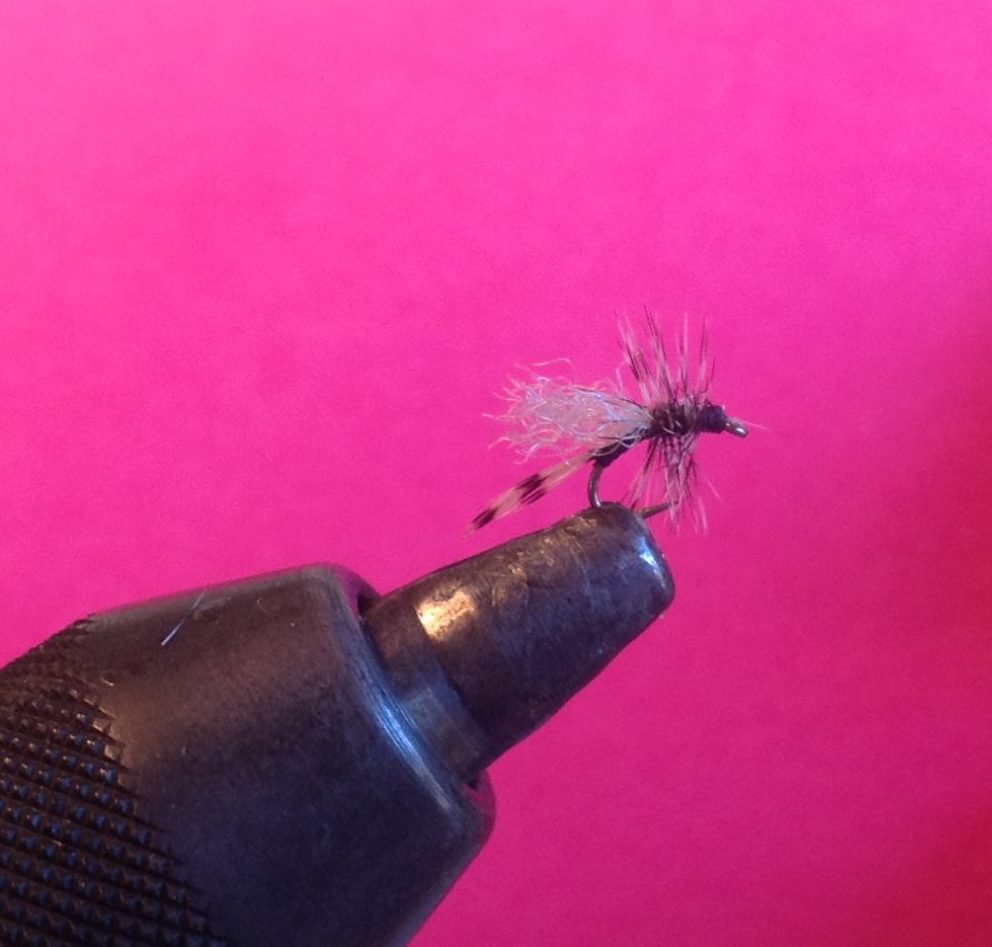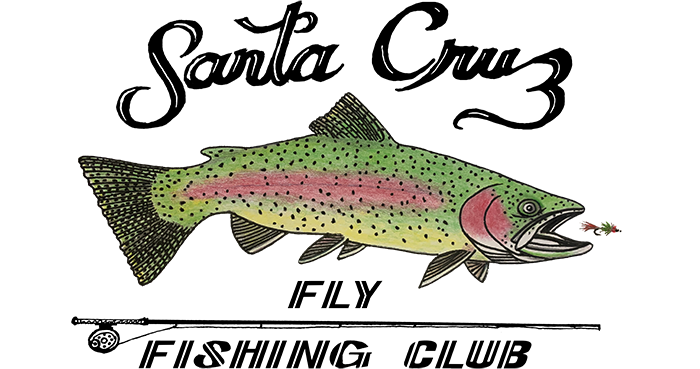
This pattern was orininated by Jeff Henkemyer and simulates the emerging stage of a midge. Midges are a very important food source for trout in the winter. They are imparative to have in your fly box when fishing tailwaters and spring creeks throughout the year. Apply floatent and use a floating line with 4x, 5x or 6x tippet, depending on size of fish? If unable to see when fishing, trail a foot or 18 inches behind a fly more visible. A simple fly to tie, with few materials. Magnification for this very small fly is most important to get the details of the fly accurate. With small flies, every wrap of thread counts. Don’t bulk up the fly.
Hook: TMC 2487 Sizes 18-22
Thread: black 8/0
Tail (shuck): grizzly hen hackle tip
Body: black thread
Hackle: grizzly
1. Crimp barb.
2. Attach thread 1/3 back on hook shank. Touching wraps to beyond barb, then touching wraps to above barb.
3. Select a very small hen neck feather. Position on top of shank so it extends hook length to rear. With touching wraps forward, tie in up to hook point. Cut excess.
4. Moisten fibers at end of Zelon, pull to straighten a little. Make cut straight across. Pinch fibers, then tie to top of shank with touching wraps to one eye length behind eye. Cut excess. Tie down butt ends. Cut off any stray fibers. Tilt hook back in vise a little.
5. Select hackle with barbs 1 and 1/2 hook gap. At butt end, cut about 4 barbs short on each side of the stem “crew cut”. With dull side facing you, tie in “crew cut”with touching wraps back to wing. Using touching hackle turns forward, forcing thread forward with each turn, end up one eye length behind eye. Tie off cut excess.
6. While holding hackle back out of the way, wrap small thread head. Whip finish, cut thread. Cut off any whiskers.
Posted on December 30th, 2020
